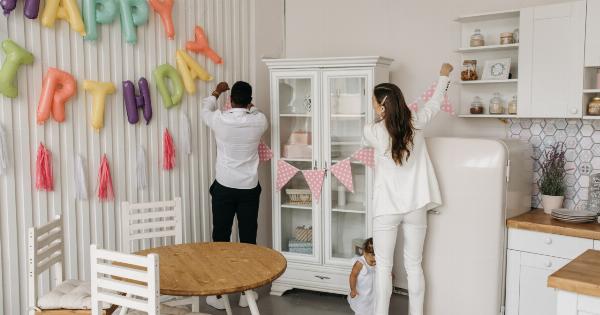As parents, the safety of our children is always our priority. We teach them how to cross the street safely, we make sure they wear helmets while riding bicycles, and we hold their hands in crowded places.
But have you ever stopped to consider emotional safety?.
Emotional safety refers to the feeling of security, trust, and comfort that children experience in their relationships with their caregivers.
When kids feel emotionally safe, they are more likely to explore their environment, ask questions, and participate in new activities. They also develop better coping strategies and are less likely to experience anxiety or depression.
Here are ten tips to help you build emotional safety in your children:.
1. Create a safe physical environment
Having a safe physical environment is fundamental to building emotional safety. Make sure your home is clean, organized, and free from hazards.
Use child-proofing devices to prevent accidents and make sure your child’s room is a comfortable and inviting space. Having a consistent and predictable daily routine can also create a sense of security for children.
2. Be present and attentive
Children need our undivided attention. When you’re with your child, put away your phone and focus on them. Listen to their stories, respond to their questions, and engage in their play.
Being present and attentive shows your child that they are valued and important.
3. Validate their feelings
It’s important to let your child know that their feelings are valid and okay. Instead of dismissing their emotions, acknowledge and validate them.
This helps your child learn to regulate their emotions and builds trust in their relationship with you.
4. Use positive reinforcement
Using praise and positive reinforcement can help build your child’s self-esteem and confidence. When they exhibit positive behavior, acknowledge and reward it. This reinforces the behavior and helps your child feel good about themselves.
5. Create routines and rituals
Creating routines and rituals can help your child feel a sense of predictability and control. This can include bedtime routines, family traditions, and mealtime rituals. Routines and rituals help create a sense of security and comfort for children.
6. Foster independence
Encouraging your child to be independent and take risks can help build resilience and self-reliance. Give your child the opportunity to make choices and take on age-appropriate responsibilities.
This helps them develop confidence and a sense of competence.
7. Be consistent and predictable
Consistency and predictability are key to building emotional safety. Being consistent in your responses to your child’s behavior helps them understand the boundaries and consequences of their actions.
Being predictable in your routines and behaviors helps create a sense of security for your child.
8. Practice open communication
Open communication is essential for building emotional safety. Encourage your child to express their feelings and opinions, and listen actively when they do.
This helps your child feel heard and understood, which builds trust in their relationship with you.
9. Model healthy coping strategies
Modeling healthy coping strategies is important for your child’s emotional well-being. It’s okay to feel upset or angry, but it’s important to learn how to manage those feelings in a healthy way.
When you model healthy coping strategies, you’re teaching your child how to regulate their own emotions.
10. Show unconditional love
Unconditional love is the foundation of emotional safety. Let your child know that you love them no matter what and that your love is not dependent on their behavior or achievements.
This helps your child feel secure and confident in their relationship with you.
Conclusion
Building emotional safety in your child is essential for their overall well-being.
By creating a safe physical environment, being present and attentive, validating their feelings, using positive reinforcement, creating routines and rituals, fostering independence, being consistent and predictable, practicing open communication, modeling healthy coping strategies, and showing unconditional love, you can help your child feel secure, valued, and loved.




























